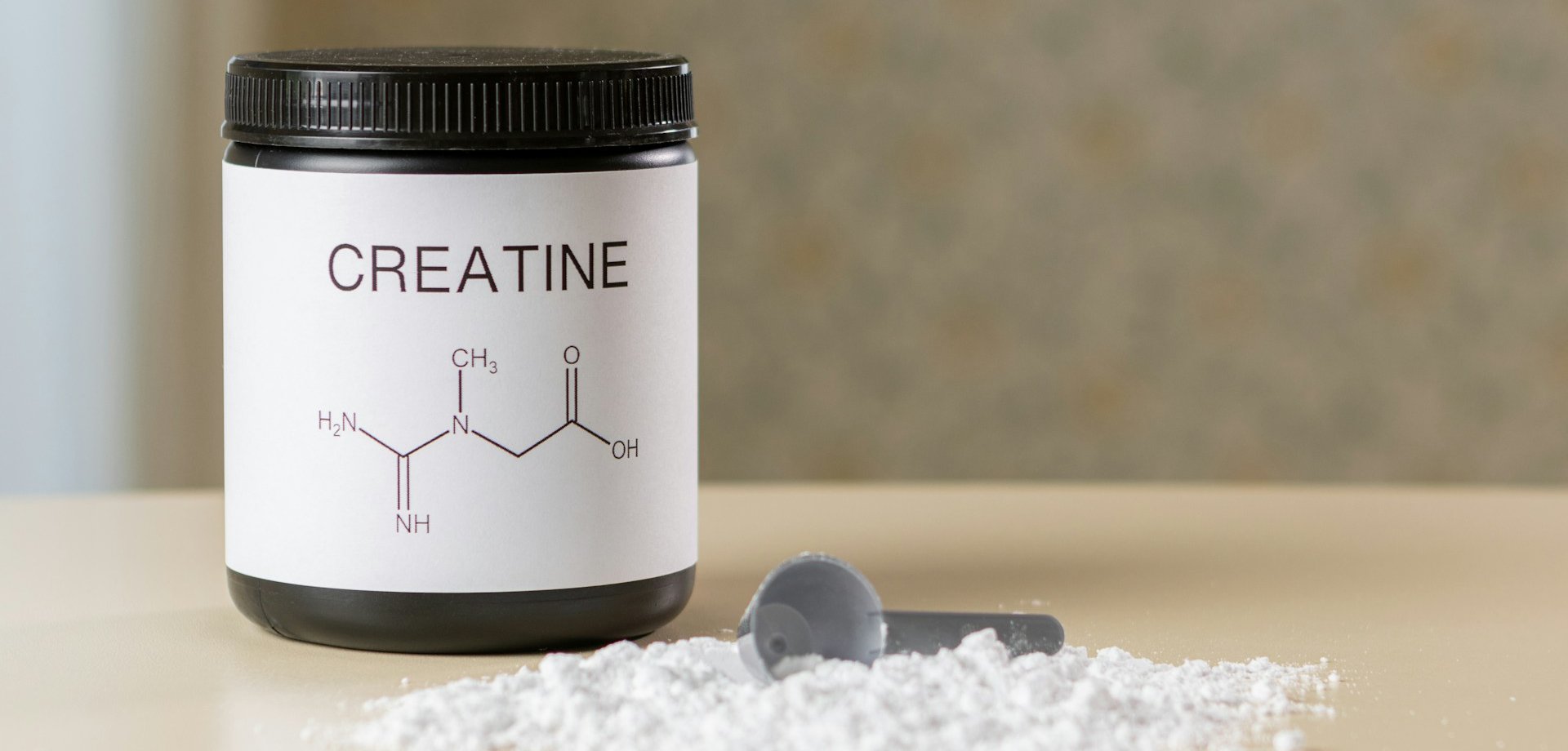Krill Oil: A Superior Alternative to Fish Oil
Author:
Julio Valero
Published on:
3/22/2025

The effect of krill oil supplementation on skeletal muscle size and function in older adults: a randomized controlled trial
Fish oil is an effective supplement for cardiovascular and muscular health. Krill oil is emerging as a promising alternative.
Overview
Changes in muscle strength were assessed using a leg extension test after 6 months of consuming krill oil or a placebo.
One study found that daily consumption of 4 grams of krill oil for six months significantly improved muscle strength in healthy older adults, compared to those receiving a placebo.
Regularly consuming omega-3 fatty acids, either in krill oil or fish supplements, or by eating fatty fish, helps maintain muscle mass and function. This is especially beneficial for people with sarcopenia, the age-related loss of muscle mass.
What's the problem?
Sarcopenia, the loss of muscle mass that accompanies aging, represents a serious threat to the health of the growing older adult population worldwide. In the United States, medical costs associated with this condition amount to $40 billion annually. Furthermore, sarcopenia significantly increases the risk of mortality in older adults. This risk worsens in hospitalized patients, rising two to three times, and reaches an alarming six-fold increase in those with type 2 diabetes and sarcopenia. Sarcopenia, a condition that begins around age 40, involves the gradual loss of muscle mass (0.5–1% annually) and significantly increases the risk of disability and functional decline. This process, driven by various factors, is metabolically characterized by a shift in muscle protein metabolism that favors catabolism. Scientific studies have shown that, compared to younger people, older adults experience lower muscle protein production after eating. Although they can achieve levels similar to those of younger adults by consuming more protein, the specific muscle (myofibrillar) response to essential amino acids, even at high doses, is reduced. This decrease is due, in part, to decreased activity of key regulators such as mTOR and S6K, which are essential for muscle protein production and are activated by nutrients and exercise. In short, the signaling pathways that promote muscle growth are weakened in older adults.

Aging leads to a decrease in muscle mass (sarcopenia) due to a reduced response to nutrition and exercise. While this response can be improved with higher doses of exercise, alternatives are being sought. The omega-3 fatty acids EPA and DHA, found in fish and krill oil, have shown promising results in increasing muscle mass and improving the body's response to nutrition in older adults. However, the evidence is mixed. Krill oil, which contains choline and astaxanthin, stands out for its potential to improve muscle health. A recent study investigates its effectiveness in older adults.
Hypothesis
This study investigated whether krill oil supplementation can improve muscle strength and size in older adults. The results showed an increase in leg strength, suggesting a positive effect of krill oil on muscle function.

What Did They Test and How?
Participants
This study, like many others during the COVID-19 pandemic, was affected by interruptions and data loss. The premature suspension of the study resulted in missing follow-up data for four participants. Despite these limitations, a final sample size of 94 healthy men and women aged 65 years and older, with a body mass index (BMI) less than 35 kg/m², and who performed less than one hour of structured exercise per week was achieved.
Study procedures
A six-month, double-blind study was conducted, with participants randomly divided into two groups: one receiving krill oil and the other a placebo. Both groups maintained their usual diet and physical activity.
Control group
Four grams of a vegetable oil blend consisting of corn oil, palm kernel oil, and medium-chain triglycerides were administered daily in the following ratio: 4 parts corn oil, 4 parts palm kernel oil, and 3 parts medium-chain triglycerides. The blend contained 4 milligrams of n-3 polyunsaturated fatty acids (PUFAs) per gram, with less than 1 milligram per gram of EPA and DHA combined.
Krill oil group
4 capsules of krill oil daily, each containing 1 gram, to obtain 193 mg of EPA, 96 mg of DHA and 79 mg of choline.
Table 1: Participant characteristics quality of life and dietary intake data in control and krill oil groups at baseline, 6 weeks and 6 months
Control | Krill | |||||
Baseline | 6 weeks | 6 months | Baseline | 6 weeks | 6 months | |
Age (years) | 70.9 (5.2) | - | - | 71.3 (4.9) | - | - |
Height (cm) | 164.5 (10) | - | - | 169.1 (8.5) | - | - |
Weight (kg) | 71.1 (14.2) | 71.4 (14.2) | 70.9 (14.0) | 72.5 (10.4) | 72.9 (10.5) | 72.7 (10.8) |
Systolic BP (mmHg) | 131.7 (13.7) | 127.3 (14.6) | 129.4 (14.2) | 135.4 (11.9) | 131.8 (12.4) | 132.7 (12.7) |
Diastolic BP (mmHg) | 78.4 (9.2) | 75.3 (10.5) | 76.5 (8.5) | 78.6 (7.8) | 75.2 (7.7) | 77.1 (7.9) |
Body Fat (%) | 30.85 (8.09) | 30.92 (7.90) | 31.41 (8.05) | 30.05 (7.55) | 29.75 (7.20) | 29.98 (7.47) |
Muscle Mass (kg) | 26.66 (6.54) | 26.84 (5.59) | 25.87 (5.24) | 27.50 (5.33) | 28.10 (5.13) | 27.71 (5.31) |
EQ5-5DL VAS | 89.0 (9.6) | 87.4 (9.0) | 85.6 (11.9) | 86.4 (10.6) | 87.9 (8.8) | 85.7 (9.9) |
EQ5-5DL index score | 0.89 (0.1) | 0.90 (0.1) | 0.89 (0.1) | 0.88 (0.1) | 0.88 (0.1) | 0.87 (0.1) |
Energy Intake (kJ) | 7269.8 (3370.4) | - | 6742.9 (2065.9) | 6926.7 (2204.7) | - | 6932.5 (2605.1) |
Protein Intake (% of total energy) | 17.3 (3.0) | - | 16.7 (2.9) | 16.9 (3.1) | - | 16.3 (3.4) |
Fat Intake (% of total energy) | 36.1 (6.2) | - | 37.1 (5.2) | 36.2 (5.3) | - | 37.4 (7.5) |
Carbohydrate Intake (% of total energy) | 46.9 (7.0) | - | 46.3 (5.9) | 46.5 (7.2) | - | 45.6 (7.9) |
Polyunsaturated Fatty Acid Intake (% of total energy) | 8.1 (6.4) | - | 7.4 (5.8) | 7.6 (6.3) | - | 5.8 (5.1) |
Data are mean (SD)
Measurements
The participants performed a maximal strength test with their right leg on a dynamometer, a machine that measures strength. The knee was held bent at 90 degrees. Three 10-second attempts were made, with 3 minutes of rest between each attempt, and the maximal strength achieved was recorded. To better understand muscle and nerve function, electrodes were placed on the vastus lateralis muscle of the thigh. These electrodes measured the muscle's electrical activity during the test, allowing calculations of the rate of force development and the amplitude of the electrical signal.
To assess muscle growth, B-mode ultrasound was used to obtain precise measurements of the thickness of the vastus lateralis muscle of the right leg.
A dynamometer was used to assess grip strength. Each participant took three measurements with each hand, and the highest value was selected for data analysis.
Participants' physical capacity was assessed using a five-timed chair-rising test and a 4-meter walk test.
What Did They Find?
Leg Extension Strength
Although changes in peak torque were not substantial, a notable difference was observed between the groups at six months. Specifically, the krill oil group showed a greater increase in peak leg extension torque compared to the placebo group during this period (ranging from -2.2% to +14.1% in the control group, and from +7.1% to +17.2% in the krill group).
However, the differences between the groups at baseline and six weeks were not significant. Analysis of Figure 1 reveals that the krill oil group experienced a minimal increase in peak torque over time, while the control group remained relatively stable.
Regarding other measures of neuromuscular function, the data showed no significant differences, with the exception of an interaction effect in the M wave at six months (17.9 mV in the control group vs. 20.6 mV in the krill group), suggesting greater muscle excitability in the krill group. No significant differences were found between groups in short-battery physical performance tests.
Figure 1 Maximum torque in leg extension.
Data are mean (SD). *Significant difference from control at 6 months (p < 0.05).
Grip Strength
The results of the statistical analysis revealed that krill oil significantly improved grip strength (p < 0.05). The krill oil group experienced an average increase of 3.4 kg in grip strength compared to the control group, which was particularly noticeable at six months.
Figure 2 Grip strength.
Data are mean (SD). *Significant difference from control at 6 months (p < 0.05).
Muscle thickness
Muscle thickness analysis (Figure 3) revealed minimal differences. A significant interaction effect (p = 0.0124) was found, but no group (p = 0.5457) or time (p = 0.2863) effects were found.
Figure 3 Changes in muscle thickness.
Data are mean (SD).
Six-Month Treatment Effect & Fatty Acid Composition
Figure 4 (below) summarizes the main results of this study, showing the percentage of improvement observed in the krill oil-treated group over the six-month supplementation period. These percentages reflect the positive impact of the treatment on various measures. For example, a 9.3% increase in maximum torque, a 10.9% increase in grip strength, and a 3.5% increase in muscle thickness were observed. Furthermore, analysis of fatty acid composition revealed significant differences between groups, particularly in the levels of arachidonic acid, eicosapentaenoic acid, docosahexaenoic acid, and the omega-3 index, as detailed in Table 2.
Figure 4 Treatment effect (%).
Data are mean (95% CI).
Table 2 Fatty acid composition in control and krill oil groups at baseline, 6 weeks and 6 months.
Control | Krill | |||||
Baseline | 6 weeks | 6 months | Baseline | 6 weeks | 6 months | |
Arachidonic Acid (%) | 9.0 (1.9) | 8.6 (1.8) | 9.2 (1.9) | 9.6 (1.5) | 8.6 (1.7) | 8.5 (1.3) * |
Eicosapentaenoic Acid (%) | 1.3 (0.7) | 1.1 (0.5) | 1.1 (0.4) | 1.2 (0.6) | 3.2 (1.2) | 3.2 (1.1) * |
Docosahexaenoic Acid (%) | 3.5 (1.0) | 3.4 (1.1) | 3.5 (1.0) | 3.4 (1.0) | 4.2 (1.2) | 4.4 (0.9) * |
*Omega-3 Index (%) | 6.7 (1.9) | 6.4 (1.8) | 6.5 (1.6) | 6.5 (1.7) | 9.7 (2.6)- | 10.0 (2.1) * |
Data are mean (SD). *Denotes a significant interaction effect in the ANOVA (p < 0.05).
What Do the Findings Mean?
The recent, well-executed study compared the effects of 4 grams of krill oil daily with an equivalent amount of non-omega-3 fats on muscle strength and size in older adults. The results indicated that krill oil showed a slight advantage in increasing muscle strength, specifically in leg extension and grip strength. However, the differences in muscle thickness were minimal and visually difficult to discern, as shown in Figure 3.
Importantly, the study participants did not have sarcopenia, suggesting that the benefits of krill oil may be even greater in people with this condition or other muscle-degenerative diseases.
Although changes in muscle mass were modest after six weeks, a longer period of supplementation and exercise may be required to observe more significant effects. Despite the subtlety of the changes in muscle mass, even small improvements can be relevant to the health and quality of life of older adults, especially when considering improvements in strength, which correlate with lower mortality in this age group.
Although the study suggests that krill oil may have anabolic effects, it is crucial to interpret these results with caution. The participants were older adults with reduced muscular responses to food, limiting the applicability of the findings to younger, healthier populations.
It's possible that krill oil simply restored normal muscle function in this specific group, rather than promoting greater than normal muscle growth. Furthermore, inflammation, which is typically higher in older people, could have influenced the results. Inflammation can affect how muscles respond to growth stimuli, which could explain the differences observed in studies on anti-inflammatories and muscle growth between young and older people.
The omega-3 fatty acids present in krill oil have anti-inflammatory properties, which could have contributed to the observed effects. However, more research is needed to fully understand how omega-3s affect muscle growth and inflammation in different populations.
Although omega-3s offer potential benefits for cardiovascular health and blood lipids, it is important not to overinterpret the results of the krill oil study. Additional studies with rigorous designs and diverse populations are needed to confirm these findings and determine the true effects of krill oil and omega-3s on muscle growth.
The study showed that krill oil helped older people gain muscle and strength. However, it did not improve their performance on physical tests. This could be because the tests measured speed, not strength. It is possible that the increased strength did not translate into greater speed. Another explanation is that the tests were not demanding enough to detect improvements.
In short, krill oil appears to benefit muscle mass and strength in older people. It is not yet known whether it would have the same effect on young, healthy people.

How Can You Apply These Findings?
Krill oil is a good source of omega-3s, which are healthy fats. While it may help increase muscle strength, it likely won't build muscle in young adults. However, it may benefit heart health.
Many people wonder whether krill oil or fish oil is better. Both are good sources of omega-3s, but krill oil may be better absorbed by the body. Overall, krill oil is at least as effective as fish oil, and possibly better.
When choosing an omega-3 supplement, consider your needs and budget. Krill oil may be a good option if you're looking for greater absorption, but fish oil is generally less expensive.
In studies, an effective dose of krill oil has been 4 grams per day, divided into two doses.
References
Alkhedhairi, S. A., Aba Alkhayl, F. F., Ismail, A. D., Rozendaal, A., German, M., MacLean, B., Johnston, L., Miller, A. A., Hunter, A. M., Macgregor, L. J., Combet, E., Quinn, T. J., & Gray, S. R. (2022). The effect of krill oil supplementation on skeletal muscle function and size in older adults: A randomised controlled trial. Clinical nutrition (Edinburgh, Scotland), 41(6), 1228–1235.
Goates, S., Du, K., Arensberg, M. B., Gaillard, T., Guralnik, J., & Pereira, S. L. (2019). Economic Impact of Hospitalizations in US Adults with Sarcopenia. The Journal of frailty & aging, 8(2), 93–99.
Brown, J. C., Harhay, M. O., & Harhay, M. N. (2016). Sarcopenia and mortality among a population-based sample of community-dwelling older adults. Journal of cachexia, sarcopenia and muscle, 7(3), 290–298.
Rangel, E. L., Rios-Diaz, A. J., Uyeda, J. W., Castillo-Angeles, M., Cooper, Z., Olufajo, O. A., Salim, A., & Sodickson, A. D. (2017). Sarcopenia increases risk of long-term mortality in elderly patients undergoing emergency abdominal surgery. The journal of trauma and acute care surgery, 83(6), 1179–1186.
Takahashi, F., Hashimoto, Y., Kaji, A., Sakai, R., Okamura, T., Kitagawa, N., Okada, H., Nakanishi, N., Majima, S., Senmaru, T., Ushigome, E., Hamaguchi, M., Asano, M., Yamazaki, M., & Fukui, M. (2021). Sarcopenia Is Associated With a Risk of Mortality in People With Type 2 Diabetes Mellitus. Frontiers in endocrinology, 12, 783363.
Kelley, G. A., & Kelley, K. S. (2017). Is sarcopenia associated with an increased risk of all-cause mortality and functional disability?. Experimental gerontology, 96, 100–103.
Rossi, A. P., Urbani, S., Fantin, F., Nori, N., Brandimarte, P., Martini, A., Zoico, E., Mazzali, G., Babbanini, A., Muollo, V., & Zamboni, M. (2020). Worsening Disability and Hospitalization Risk in Sarcopenic Obese and Dynapenic Abdominal Obese: A 5.5 Years Follow-Up Study in Elderly Men and Women. Frontiers in endocrinology, 11, 314.
Paddon-Jones, D., Short, K. R., Campbell, W. W., Volpi, E., & Wolfe, R. R. (2008). Role of dietary protein in the sarcopenia of aging. The American journal of clinical nutrition, 87(5), 1562S–1566S.
Cuthbertson, D., Smith, K., Babraj, J., Leese, G., Waddell, T., Atherton, P., Wackerhage, H., Taylor, P. M., & Rennie, M. J. (2005). Anabolic signaling deficits underlie amino acid resistance of wasting, aging muscle. FASEB journal : official publication of the Federation of American Societies for Experimental Biology, 19(3), 422–424.
Symons, T. B., Sheffield-Moore, M., Wolfe, R. R., & Paddon-Jones, D. (2009). A moderate serving of high-quality protein maximally stimulates skeletal muscle protein synthesis in young and elderly subjects. Journal of the American Dietetic Association, 109(9), 1582–1586.
Norton, L. E., & Layman, D. K. (2006). Leucine regulates translation initiation of protein synthesis in skeletal muscle after exercise. The Journal of nutrition, 136(2), 533S–537S.
Shad, B. J., Thompson, J. L., & Breen, L. (2016). Does the muscle protein synthetic response to exercise and amino acid-based nutrition diminish with advancing age? A systematic review. American journal of physiology. Endocrinology and metabolism, 311(5), E803–E817.
Smith, G. I., Atherton, P., Reeds, D. N., Mohammed, B. S., Rankin, D., Rennie, M. J., & Mittendorfer, B. (2011). Dietary omega-3 fatty acid supplementation increases the rate of muscle protein synthesis in older adults: a randomized controlled trial. The American journal of clinical nutrition, 93(2), 402–412.
Lalia, A. Z., Dasari, S., Robinson, M. M., Abid, H., Morse, D. M., Klaus, K. A., & Lanza, I. R. (2017). Influence of omega-3 fatty acids on skeletal muscle protein metabolism and mitochondrial bioenergetics in older adults. Aging, 9(4), 1096–1129.
Huang, Y. H., Chiu, W. C., Hsu, Y. P., Lo, Y. L., & Wang, Y. H. (2020). Effects of Omega-3 Fatty Acids on Muscle Mass, Muscle Strength and Muscle Performance among the Elderly: A Meta-Analysis. Nutrients, 12(12), 3739.
Marzuca-Nassr, G. N., Vitzel, K. F., De Sousa, L. G., Murata, G. M., Crisma, A. R., Rodrigues Junior, C. F., Abreu, P., Torres, R. P., Mancini-Filho, J., Hirabara, S. M., Newsholme, P., & Curi, R. (2016). Effects of high EPA and high DHA fish oils on changes in signaling associated with protein metabolism induced by hindlimb suspension in rats. Physiological reports, 4(18), e12958.
Delpino, F. M., & Figueiredo, L. M. (2021). Supplementation with omega-3 and lean body mass in the general population: A systematic review and meta-analysis. Clinical nutrition ESPEN, 44, 105–113.
Moretti, A., Paoletta, M., Liguori, S., Bertone, M., Toro, G., & Iolascon, G. (2020). Choline: an essential nutrient for skeletal muscle. Nutrients, 12(7), 2144.
Liu, S. Z., Ali, A. S., Campbell, M. D., Kilroy, K., Shankland, E. G., Roshanravan, B., ... & Conley, K. E. (2018). Building strength, endurance, and mobility using an astaxanthin formulation with functional training in elderly. Journal of cachexia, sarcopenia and muscle, 9(5), 826-833.
Sasaki, H., Kasagi, F., Yamada, M., & Fujita, S. (2007). Grip strength predicts cause-specific mortality in middle-aged and elderly persons. The American journal of medicine, 120(4), 337–342.
Xia, Z., Cholewa, J., Zhao, Y., Shang, H. Y., Yang, Y. Q., Araújo Pessôa, K., Su, Q. S., Lima-Soares, F., & Zanchi, N. E. (2017). Targeting Inflammation and Downstream Protein Metabolism in Sarcopenia: A Brief Up-Dated Description of Concurrent Exercise and Leucine-Based Multimodal Intervention. Frontiers in physiology, 8, 434.
Trappe, T. A., Carroll, C. C., Dickinson, J. M., LeMoine, J. K., Haus, J. M., Sullivan, B. E., Lee, J. D., Jemiolo, B., Weinheimer, E. M., & Hollon, C. J. (2011). Influence of acetaminophen and ibuprofen on skeletal muscle adaptations to resistance exercise in older adults. American journal of physiology. Regulatory, integrative and comparative physiology, 300(3), R655–R662.
Lilja, M., Mandić, M., Apró, W., Melin, M., Olsson, K., Rosenborg, S., Gustafsson, T., & Lundberg, T. R. (2018). High doses of anti-inflammatory drugs compromise muscle strength and hypertrophic adaptations to resistance training in young adults. Acta physiologica (Oxford, England), 222(2), 10.1111/apha.12948.
Gart, E., Salic, K., Morrison, M. C., Caspers, M., van Duyvenvoorde, W., Heijnk, M., Giera, M., Bobeldijk-Pastorova, I., Keijer, J., Storsve, A. B., Hals, P. A., & Kleemann, R. (2021). Krill Oil Treatment Increases Distinct PUFAs and Oxylipins in Adipose Tissue and Liver and Attenuates Obesity-Associated Inflammation via Direct and Indirect Mechanisms. Nutrients, 13(8), 2836.
McGlory, C., Wardle, SL, Macnaughton, LS, Witard, OC, Scott, F., Dick, J., Bell, JG, Phillips, SM, Galloway, SD, Hamilton, DL y Tipton, KD (2016). La suplementación con aceite de pescado suprime el ejercicio de resistencia y los aumentos inducidos por la alimentación en la señalización anabólica sin afectar la síntesis de proteínas miofibrilares en hombres jóvenes. Physiological reports, 4(6), e12715.
Hu, Y., Hu, FB y Manson, JE (2019). Suplementación con omega-3 marino y enfermedad cardiovascular: un metaanálisis actualizado de 13 ensayos controlados aleatorizados que involucraron a 127 477 participantes. Journal of the American Heart Association, 8(19), e013543.
Köhler, A., Sarkkinen, E., Tapola, N., Niskanen, T. y Bruheim, I. (2015). Biodisponibilidad de los ácidos grasos del aceite de krill, la harina de krill y el aceite de pescado en sujetos sanos: un ensayo aleatorizado, cruzado y de dosis única. Lípidos en la salud y la enfermedad, 14, 19.
Yurko-Mauro, K., Kralovec, J., Bailey-Hall, E., Smeberg, V., Stark, JG y Salem, N., Jr (2015). Niveles plasmáticos similares de ácido eicosapentaenoico y ácido docosahexaenoico alcanzados con aceite de pescado o aceite de krill en un estudio de biodisponibilidad aleatorizado, doble ciego, de cuatro semanas de duración. Lipids in health and disease, 14, 99.
Ulven, SM y Holven, KB (2015). Comparación de la biodisponibilidad del aceite de krill frente al aceite de pescado y sus efectos sobre la salud. Salud vascular y gestión de riesgos, 11, 511–524.
Comparte en redes sociales
Recent posts

A bad night's sleep: a reason to stay up even longer?

Creatine Effectiveness: What Does Science Say About Its Benefits?

Does meal timing help you lose fat?

Is your triceps press building muscle or holding you back?

Nutrition tailored to you: based on your genetic profile.

Carbohydrates: the key to an explosive workout.